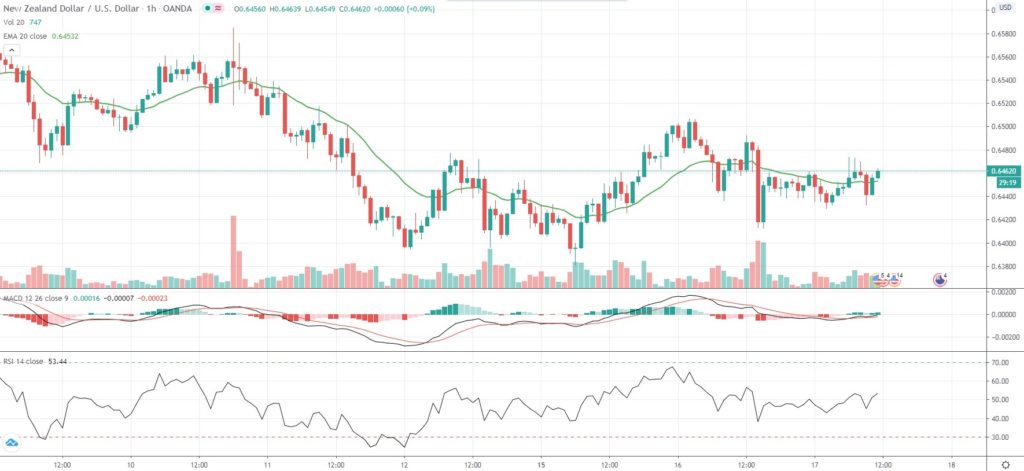Having distanced from Tuesday’s multi-day highs, NZD/USD consolidated in the area around 0.6450 on Wednesday, as a range of factors, including record-high new COVID-19 infections in six US states, new confirmed cases in Beijing as well as confrontation between Chinese and Indian troops in the western Himalayas, were weighing on investor risk sentiment.
“Market players are looking to, with caution, how critical the impact from any second wave of infections on the economy will be,” Kazushige Kaida, head of FX sales at State Street, said.
“It’s not that markets are pessimistic… But the length of time people hold their positions is getting shorter.”
The rather cautious remarks by Federal Reserve Chair Jerome Powell during his testimony before the Senate Banking Committee on Tuesday also dampened market optimism. Powell warned that production and employment would remain well below their levels from before the pandemic for a long time and there was a “reasonable probability” that more stimulus measures would be needed.
Meanwhile, a report by Statistics New Zealand earlier in the day showed the surplus on the country’s current account had widened more than expected to NZD 1.557 billion during the first quarter from NZD 0.721 billion in Q1 2019. The goods surplus rose to NZD 0.97 billion in Q1 from NZD 0.21 billion in the year-ago period, while the services surplus shrank to NZD 2.92 billion in Q1 from NZD 3.04 billion a year ago.
As of 11:41 GMT on Wednesday NZD/USD was edging up 0.12% to trade at 0.6459, while moving within a relatively tight daily range of 0.6429-0.6474. The major pair has gained 0.25% so far this week, following a 0.95% drop in the business week ended June 12th.
From macroeconomic perspective, today’s focus will be on US housing data, scheduled to be released at 12:30 GMT. The number of housing starts in the country probably rose to 1.093 million units in May, according to market expectations, from the seasonally adjusted annual rate of 0.891 million in April. The latter has been the lowest level since February 2015.
The number of building permits probably increased to 1.225 million in May from an annual level of 1.074 million in April. The latter has been the lowest level since January 2015.
Market players will be also paying attention to Federal Reserve Chair Jerome Powell’s testimony on the bank’s semi-annual monetary policy report before the House Financial Services Committee at 16:00 GMT.
Additionally, NZD traders will be expecting the quarterly GDP report by Statistics New Zealand at 22:45 GMT. New Zealand’s economy is expected to expand 0.3% year-on-year during the first quarter. In Q4 2019, New Zealand’s Gross Domestic Product rose 1.8% year-on-year, or at the slowest rate since Q4 2013, due to a slowdown in retail trade, information media & telecommunications and manufacturing.
In quarterly terms, the country’s GDP is expected to shrink 1% in Q1, following a 0.5% expansion during the three months to December 2019.
Bond Yield Spread
The spread between 1-year New Zealand and 1-year US bond yields, which reflects the flow of funds in a short term, equaled 0.2 basis points (0.002%) as of 10:15 GMT on Wednesday, down from 1.5 basis points on June 16th.
Daily Pivot Levels (traditional method of calculation)
Central Pivot – 0.6457
R1 – 0.6501
R2 – 0.6551
R3 – 0.6596
R4 – 0.6640
S1 – 0.6407
S2 – 0.6363
S3 – 0.6313
S4 – 0.6263






